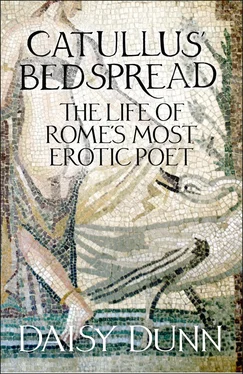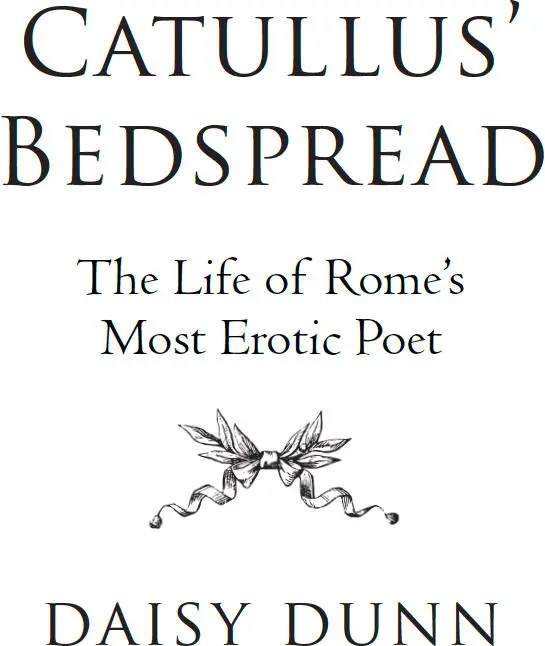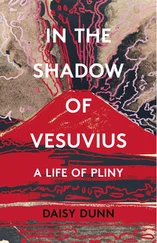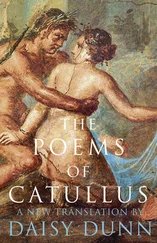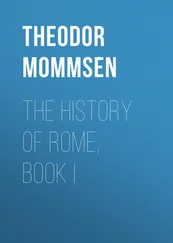
William Collins
An imprint of HarperCollins Publishers
1 London Bridge Street
London SE1 9GF
WilliamCollinsBooks.com
First published in Great Britain by William Collins in 2016
This William Collins paperback edition published in 2017
Copyright © Daisy Dunn 2016
Cover photograph © akg-images/Rainer Hackenberg
Maps by John Gilkes
Daisy Dunn asserts the moral right to be identified as the author of this work
A catalogue record for this book is available from the British Library
All rights reserved under International and Pan-American Copyright Conventions. By payment of the required fees, you have been granted the non-exclusive, non-transferable right to access and read the text of this e-book on-screen. No part of this text may be reproduced, transmitted, down-loaded, decompiled, reverse engineered, or stored in or introduced into any information storage and retrieval system, in any form or by any means, whether electronic or mechanical, now known or hereinafter invented, without the express written permission of HarperCollins.
Source ISBN: 9780007554324
Ebook Edition © ISBN: 9780007554348
Version: 2016-11-28
Praise for Catullus’ Bedspread :
‘A lively, finely crafted biography. Weaving well-researched social history with a compelling account of political machinations in Rome, the picture here is not just of a libertine prone to writing of his obscene desires, but a soulful man at the heart of a remarkable age’
Observer
‘For all those of us who love counting stars, none burns brighter in the literary firmament than that of Gaius Valerius Catullus – Dunn’s brilliant new biography of the Roman master will shine beams of light on his darkly passionate poetry’
Professor Paul Cartledge
‘The task of piecing together a biography from verse alone is one that Dunn performs with creativity and diligence’
The Times
‘Hugely enjoyable … Daisy Dunn lifts the lid on an era and world that remains engrossing two millennia on’
Catholic Herald
‘Dunn writes beautifully and clearly adores her subject. She deserves plaudits for bringing this fine poet and his tumultuous times so vividly to life’
Daily Mail
‘This is a rewarding, idiosyncratic book … Catullus would certainly applaud’
Country Life
‘Not since Nicola Shulman’s Graven with Diamonds has literary criticism seemed so thrilling. An imaginative, enriching and quick-witted book reminds us that Catullus is a poet for all time’
Standpoint
‘Lyrical, playful and startlingly original … Breathes extraordinary new life into the classical world. An unforgettable journey into the high art and low life of ancient Rome’
Dan Jones
‘Young classicist and art historian Daisy Dunn imaginatively revive[s] this most accessible of Roman poets … an intelligent and often original interpreter of the poetry [she] provides clear, direct and readable translations’
Financial Times
‘Enjoyable and diligently researched … Dunn is a sure-footed and elegant literary critic, particularly when it comes to poem 64, the scintillating mini-epic (Dunn’s own deft version is included as an appendix; and she has translated, with bright-eyed intelligence, all the poems in another volume.) … Catullus’ Bedspread is richly woven, and Dunn’s deep passion for her subject is patent’
Spectator
‘Any reader of Catullus will want to have this book’
Literary Review
For my parents and my sister, Alice
This bedspread,
Embroidered with the shapes of men
Who lived long ago, unveils the virtues of heroes
Through the miracle of art
Contents
Cover
Title Page
Copyright
Praise
Dedication
Epigraph
Maps
Author’s Note
Timeline
Prologue
I: In search of Catullus
II: The house on the Palatine Hill
III: An elegant new little book
IV: Sparrow
V: The rumours of our elders
VI: The power of three
VII: I hate and I love
VIII: Farewell
IX: A sea of mackerel
X: Canvas
XI: The boxwood Argo
XII: Godly rumbling
XIII: The Roman stage
XIV: A flower on the edge of the meadow
Epilogue
Picture Section
Appendix: Poem 64 – Catullus’ Bedspread Poem
Note on Currency and Measures
Notes
Select Bibliography
List of Illustrations
Index
Acknowledgements
About the Author
About the Publisher

Map of Italy and North Africa
Map of Greece and the East
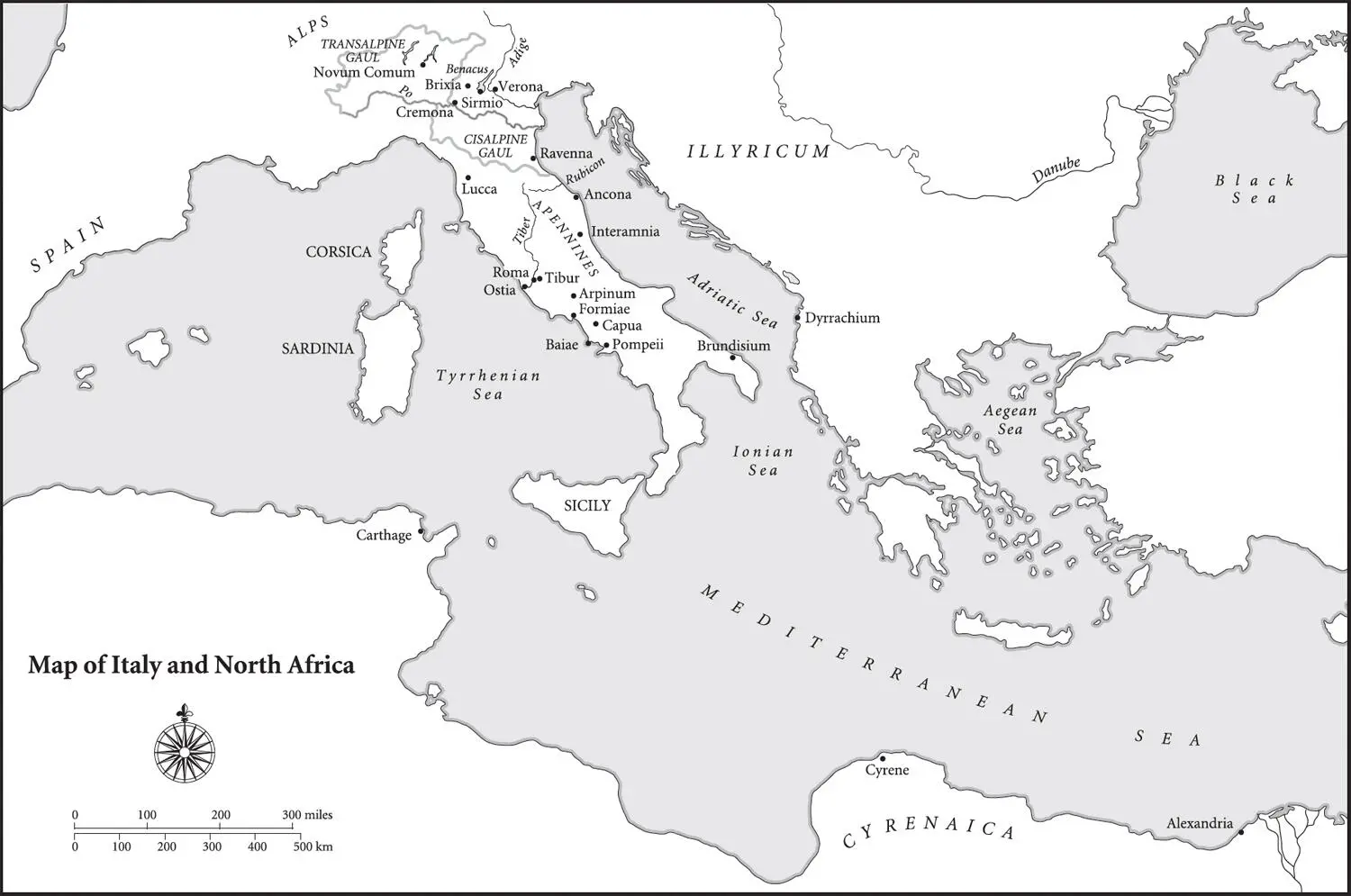


The Political System in Rome
Politicians in Rome followed an established ladder of power. At the top sat two chief magistrates, known as consuls. Male citizens of Rome (aged seventeen and above) elected the two consuls each year, and the Senate guided them, while also managing the civic purse and foreign relations. The first consuls had been plucked from the richest families; the first senators’ descendants were the patricians, or aristocrats, of Catullus’ Rome.
Before a man could even think about becoming a consul, he needed to gain some experience. As he approached the age of thirty, a budding patrician politician would strive first to be elected as a quaestor , whose tedious responsibilities involved supervising the treasury. At the end of the year, funds permitting, quaestors became life members of the Senate, and the more appealing prospect of running for the senior magistracies, aedile , praetor , then consul, suddenly became feasible. Beyond the consulship, men could become censors, who routinely examined the membership of the Senate.
The Senatorial magistrates

Before they could run for the senior magistracies, plebeian candidates, by contrast, could achieve the tribunate. Every year Catullus spent in Rome he would see ten tribunes of the people elected from the plebeian class, scurry off to their own assemblies to consider legislation, and veto measures, and each other, at will.
While the four aediles (two plebeian, two patrician) took charge of public works and entertainment, the eight praetors were as though deputies to the consuls, and oversaw legal matters, such as trials and disputes arising in the provinces. Few could wait until the end of the year, when they had the chance to proceed to a command overseas. The two consuls tended to progress to more senior foreign commands at the end of their year, too.
Читать дальше
